I struggled with a hamstring tear and high hamstring tendinopathy for years. These 7 hamstring exercises for runners strengthened my hamstring muscle and tissue and allowed me to run pain-free, faster than ever.
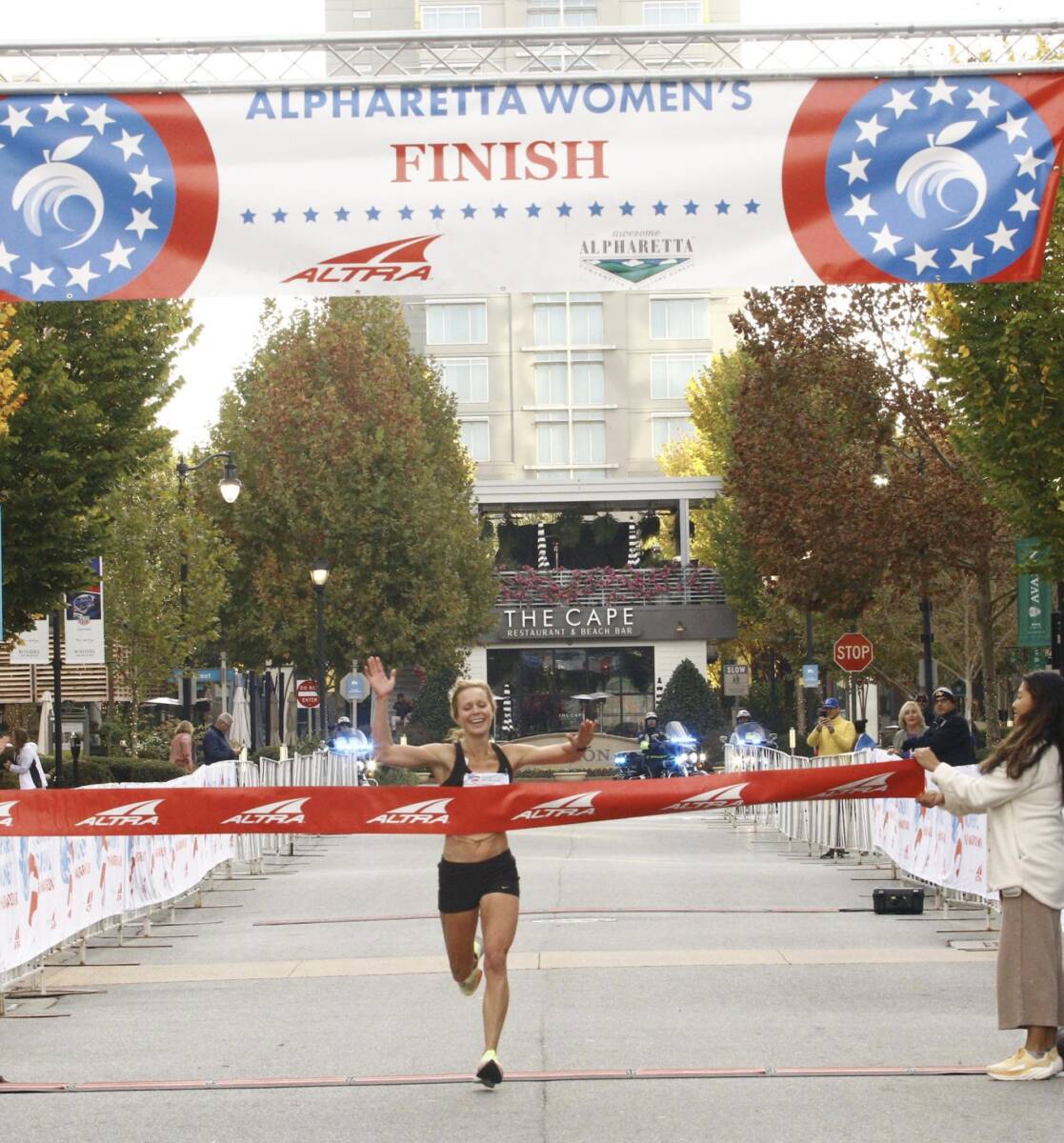
If you know me, you know that I battled a hamstring injury for more than a year. It was so long and the injury was so stubborn, that I thought I would never get better and be able to run again. However, with these hamstring exercises for runners, I was able to overcome my high hamstring injury and now it’s stronger than ever.
I remember sitting in the car with family after more than a year of struggling to get better—going through a cycle of setback after setback—crying to my husband about how I felt like giving up. Maybe I shouldn’t try being a runner again.

My daughter grabbed me by the shoulder and sternly said, “No, MOM. You CAN’T give up. You were meant for running!”
She was right.
I turned my focus to hamstring strengthening exercises I could do at home, walking, resting, and having a lot of patience. Eventually, I was able to run again.
Table of contents
So, let’s go!
Related: How I Stopped Being an Injury-Prone Runner
How I tore my hamstring and got proximal hamstring tendinopathy
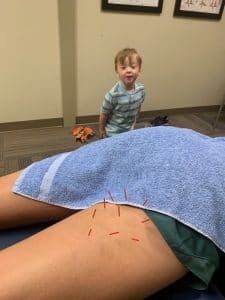
In 2019, I partially tore my hamstring in a massive marathon build-up to try to qualify for the Olympic Trials Marathon. I had one shot and went all in.
I doubled my mileage from 50 to 100 miles per week, all while not recovering well because I had two kids who weren’t great sleepers.
My hamstring injury began as a strain from a fall and felt tight. I continued to train and rehab it at physical therapy, but it tore during a half-marathon tune-up race about a month ahead of my goal marathon race.
I took my peak week off, resumed training, and ran the marathon. I continued to run after my marathon until I ran another half-marathon two months later and it became clear I could not run the way I wanted with my injured hamstring.
I write about the whole experience here.
What are hamstring muscles?
Quick anatomy lesson of the hamstrings:
The three muscles at the back of your leg are called the hamstrings:
- biceps femoris,
- semitendinosus, and
- semimembranosus.
They run from the back of the knee up to your sitting bones, also known as your ischial tuberosity. They work to extend the hip and flex the knee and run alongside the sciatic nerve.
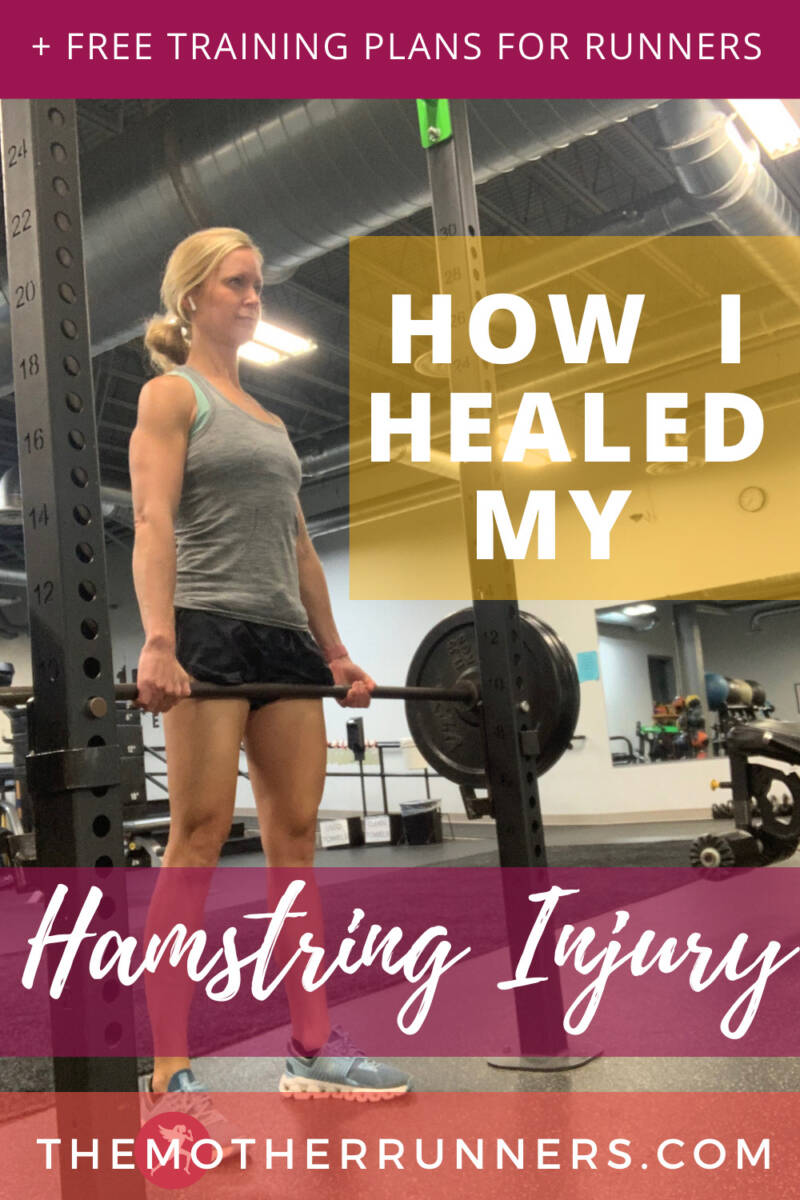
Why do runners have weak hamstrings?
It’s common for runners to have weak hamstrings and be quad-dominant. In fact, a study found that runners’ quadriceps muscles are 30 to 40 percent stronger than their hamstrings.
The reason is your quads play a starring role in your running while your hamstrings play a support role in your running:
- Your hamstrings work with your hip flexors to propel the leg forward. Your quadriceps lead the charge as the contract with force to get the momentum going.
- As your leg lands, your hamstrings work as a brake, keeping the knee from hyperextending and preparing the leg for its next step.
Related: 6 Steps to Return to Running After Injury
My hamstring injury

Via diagnostic ultrasound, I was initially diagnosed with a hamstring strain, then a partial hamstring tear in the proximal hamstring (high at the attachment to the sitting bones).
Then I was diagnosed with high hamstring tendinopathy, which is when the tendon degrades and is weakened. I also had high hamstring tendinitis, which is inflammation of the tendon and muscle.
Thus, I had all the common hamstring injuries runners get.
What hamstring injuries do runners get?
If a runner has weak hamstrings, they are at a greater risk of a hamstring strain, hamstring tendinosis, hamstring tendinitis, or a hamstring tear. This is because the runner’s hamstring can’t handle the load placed by the contracting quadriceps.
Runners will also have decreased performance as they have less power with each stride.
What did my proximal hamstring injury feel like
My hamstring strain felt like tightness in the belly of the hamstring. After I partially tore the biceps femoris, I would get intense achy pangs in my high hamstring. I also felt like my leg was being dragged behind me. It would not function. (This led to compensatory injuries).
When I was diagnosed with proximal hamstring tendinopathy, I had hamstring pain while sitting in my buttocks at the attachment.
Going upstairs or walking (especially uphill) hurt. I still did not feel like my leg would fire. The sciatic nerve was also involved in what’s called hamstring syndrome, so I could not stretch it and even doing an air squat would set it off. I would then feel like my entire posterior thigh was on fire for a couple of weeks.
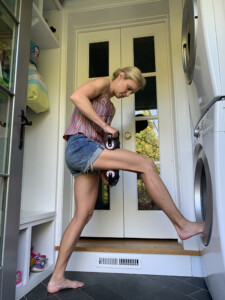
For a year, I tried all the manual therapies under the sun to fix it. Finally, I was able to heal my high hamstring injury and rid my proximal hamstring pain by doing the below exercises at home.
Related: How to Diagnose and Prevent Common Running Injuries
How do you strengthen your hamstrings?
I worked with a couple of physical therapists and doctors to try to heal my hamstring injury. You named it, I tried it.
I did every manual therapy under the sun: western dry needling, STEM, cold ultrasound, hot ultrasound, cupping, rolling, cryotherapy, regular massages, and more. I tried meloxicam and anti-anxiety meds to calm the nervous system. I bought every at-home treatment gadget.
I finally found a physical therapist who focused on strengthening the tendon and hamstring muscles. This is when I finally started to see results. Coupled with not running, I did the following hamstring exercises at home.
A few caveats:
- The non-weight-bearing exercises I did daily.
- I began conservatively with just my body weight. (Remember: at first, I couldn’t even do an air squat).
- I progressed when I did not feel pain 24-48 hours after.
- I did other exercises to strengthen my glutes, calves, and quads.
- It took several months of a gradual progression of tolerating these exercises, then walking, then run/walking did I finally feel healed.
- BIG CAVEAT: Not all injuries are the same and I am not a medical professional. This worked for me and these exercises are all beneficial to runners. However, depending on your injury, these exercises could be aggravating. Listen to your body AND your medical professional!!
Related: Does PRP Work? My Experience with a Plantar Fascia Tear
7 Hamstring Strengthening Exercises for Runners
Here are the hamstring exercises that healed my proximal hamstring pain and proximal hamstring tendinopathy! They work to bring power, strength, and mobility back to your hamstring.
Related: Strength Training for Runners Guide
Glute Bridge Variations to Hamstring Slider
- Lie on your back with feet hip-width apart, about 8 inches from your bottom.
- Contract your glutes and lift your hips so that your body forms a straight line.
- Do this for 3 sets of 10, holding the pose at the top for 2-3 seconds.
- After doing this for several days with no aggravation (but maybe some soreness), progress to a single leg: lift one leg up as you contract your glutes and lift.
- Do 3 sets of ten on each side. You can also hold a dumbbell on your hips to make it more advanced.
Then progress to the following glute bridge variations:
- Hamstring slide-out: put a towel under your feet or a book if on carpet so your feet are slippery. Lift the hips and slide both legs out. Slide them in, lift again, and repeat for 2 sets of two. Then progress to single-leg hamstring slide-out.
- Hamstring slider on ball: Now do this but with feet resting on an exercise ball. Then progress to a single leg.
- Glute bridge on step: Put feet on a step or chair. Lift hips. Progress to single-leg.
Romanian Deadlift
- Stand with your legs shoulder-width apart, hold your dumbbells on the top of your thighs, or bar if you are using one. Start with no weight to make sure your hamstring can tolerate the movement. Then progress to light weights to heavier. Go up about 5 pounds after 3 sessions.
- Pull your shoulders back. Hinge at the hips with a neutral spine (flat back—no arching or hunching). Feel your glutes and hamstrings activate. Engage your core.
- Have the weight skim your legs to the point that you can keep your back neutral. This may be to the top of your thighs or shins.
- Return back to standing. Do 4 sets of 8-12.
- Progress to single-leg after several weeks of comfortably doing this exercise.
Squats
- Stand with your legs shoulder-width apart. If using weights, hold your dumbbells at your sides. If you have a bar, rest it on the meaty parts of your shoulders behind your neck. Or, rest it on the palms of your hands as they rest against the front part of your shoulders.
- Start with no weight to make sure your hamstring can tolerate the movement. Then progress to light weights to heavier. Go up about 5 pounds after 3 sessions.
- With a neutral spine, lower down like you are going to sit in a chair. Feel your glutes activate. Engage your core.
- Keep your spine neutral (flat) and your knees from going past your toes.
- Stop before your back begins to arch. This point will likely be about the point that your legs are bent at a 90-degree angle.
- Carefully, raise back up without your chest falling forward.
- Do 4 sets of 8-12. Progress with more weight after 3 sessions of the same weight, increasing by 5 pounds at a time.
Squat Jump
- Stand with feet about hip-width apart and lower your body in a usual squat position.
- Immediately straighten your legs and propel your body into the air, jumping with both your feet.
- Land back to your original position and quickly perform another squat.
- Focus on jumping as high as possible and going down as deep as your body allows during the squat position.
- Do 3 sets of 10.
Single-leg Hop
- Stand close to a wall with one hand resting on the wall for balance.

- Balance on one foot and simply lower down to a squat on one foot and hop up as high as your can.
- Do three sets of 10 on each foot.
Related: 8 Best Plyometrics for Runners
Nerve flossing
- This exercise helps improve the range of motion of the sciatic nerve. Lie on your back on the floor
 or a bed.
or a bed. - Lift one leg straight up and bend your leg at the knee until it is 90 degrees.
- Then straighten. You may feel a pull in the back on the leg.
- Do 1 set of 30 reps on each side, 3 times per day.
Eccentric hamstring stretch
- Attach a rubber band to inside a door frame or in a closed window so that it is about 3 feet off the ground.

- Lie on your back with your head near the door or window.
- Loop your foot into the band and lower your leg to the ground.
- Slowly lift your leg for about 2-3 seconds.
- Repeat 10 reps for 3 rounds.
It took several months of diligently doing these hamstring exercises daily (and every 2-3 days if with weights), before I was able to see significant improvement.
Finally, as I began walking then run/walking, I regained power in my leg and was able to run pain-free for long distances and at fast paces.
People told me it was impossible to overcome proximal hamstring pain and proximal hamstring tendinopathy. They said I would always have high hamstring pain. But they were wrong! My hamstring has never been stronger and has never felt better!
If you have proximal hamstring pain, please do not lose hope. If you would like help reaching your running goals, please check out my coaching services!



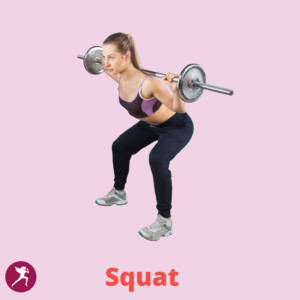
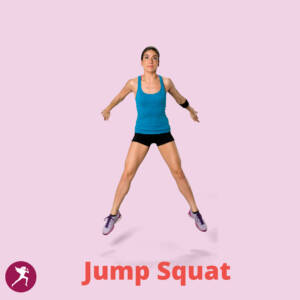
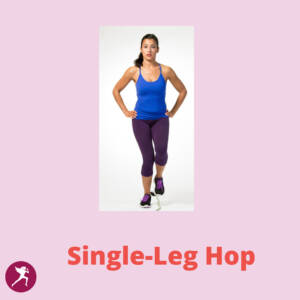
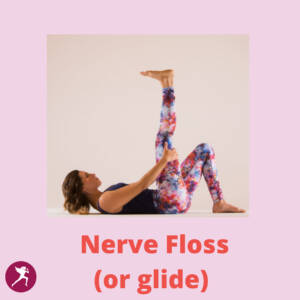 or a bed.
or a bed.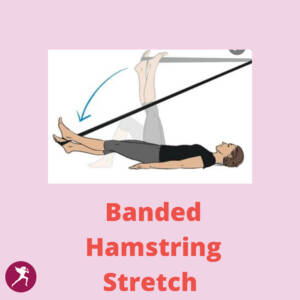
Fantastic article I am 2 and a half years into my PHT journey. Thanks for spending time posting this.
Best of luck to you!
Thank you! Great video! Your daughter “hovering” all over your set without making you flinch shows your resilience lol
After my first ‘hamstring thing’ (obviously undiagnosed) last week after a longer than usual run for me – and post-vacation), these exercises are getting added ASAP to avoid having this happen again!